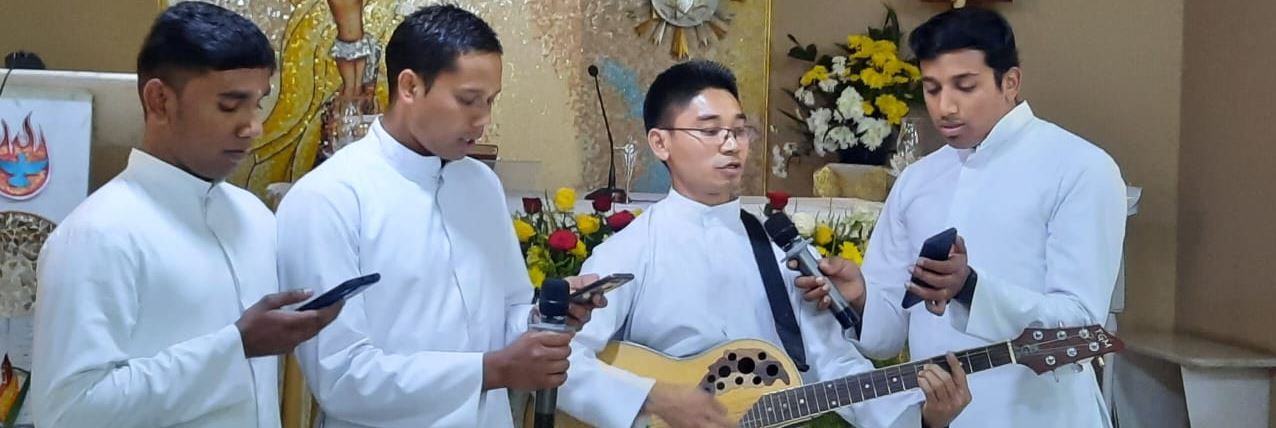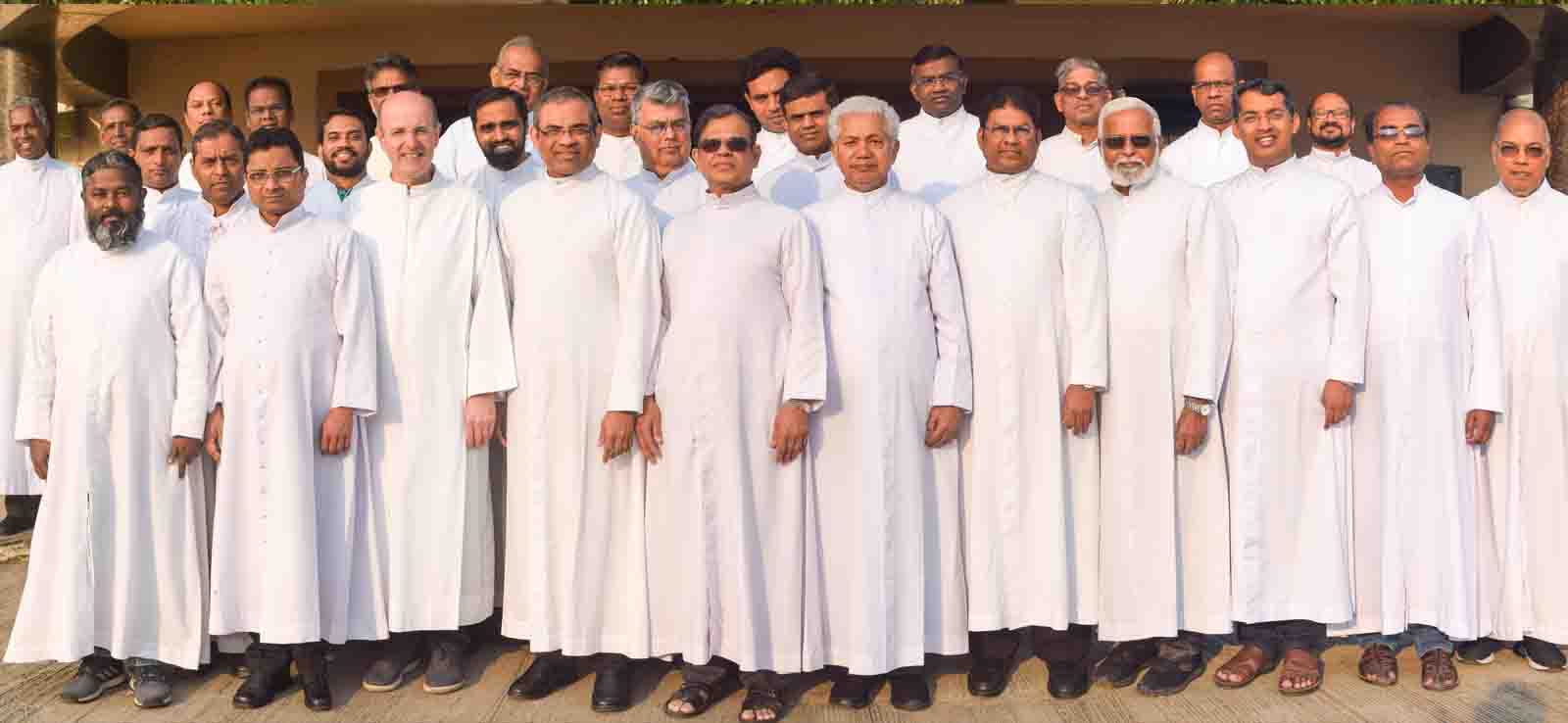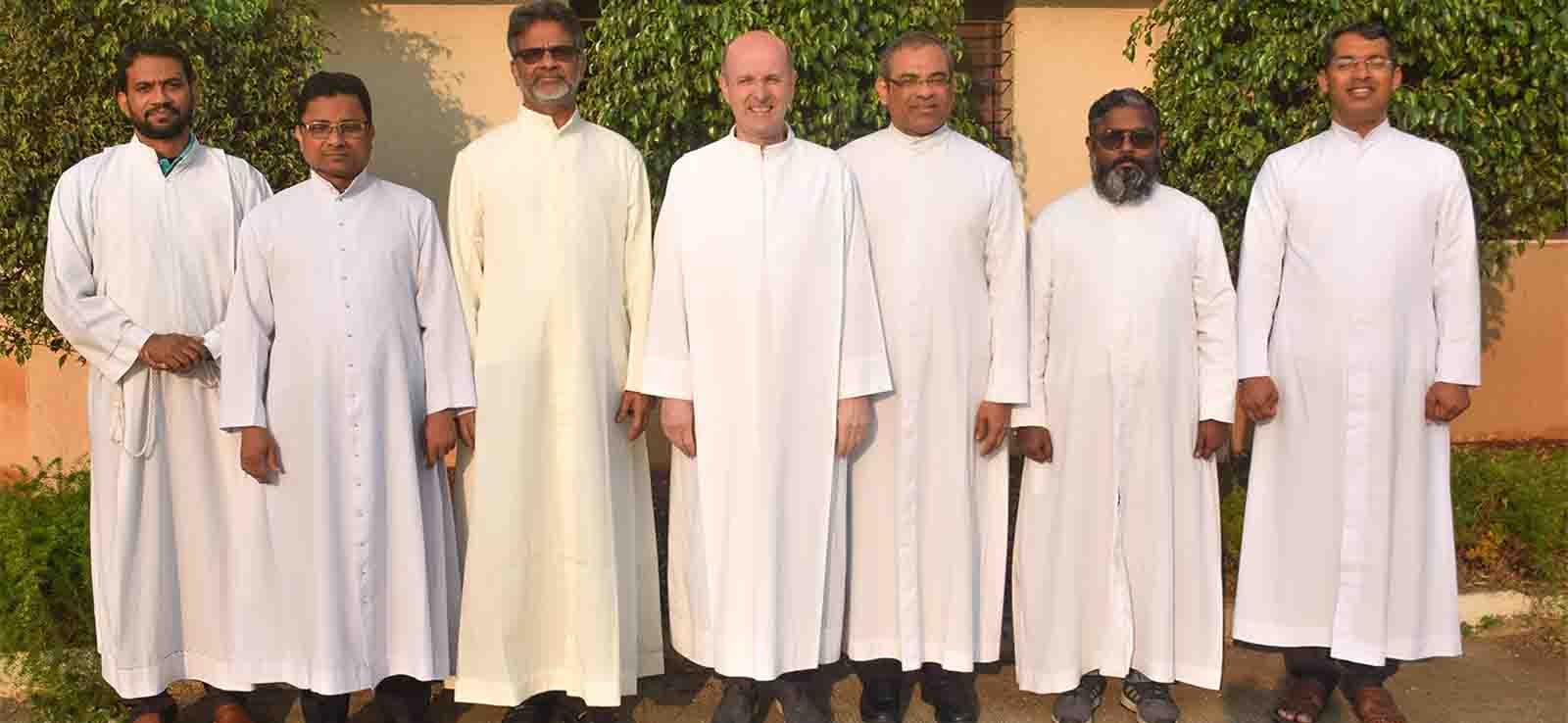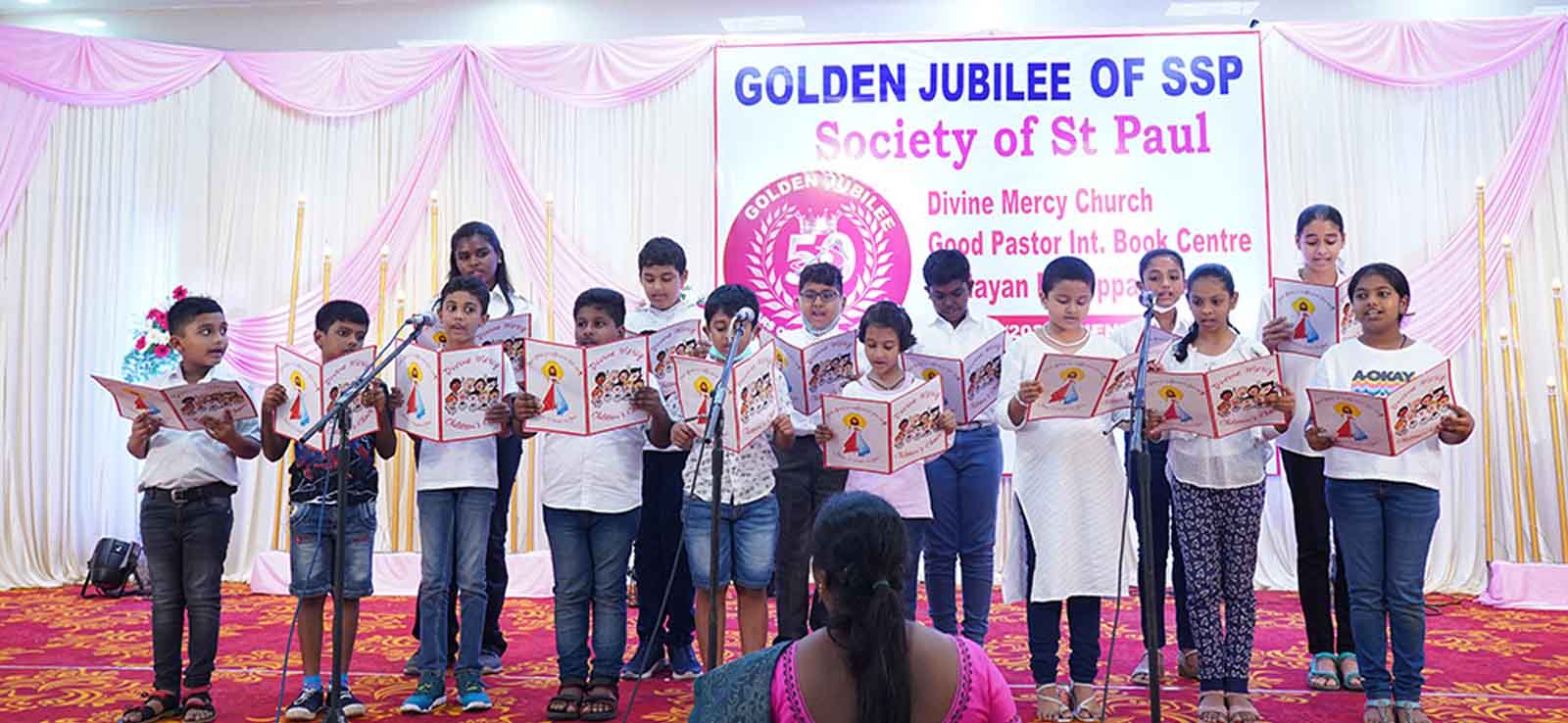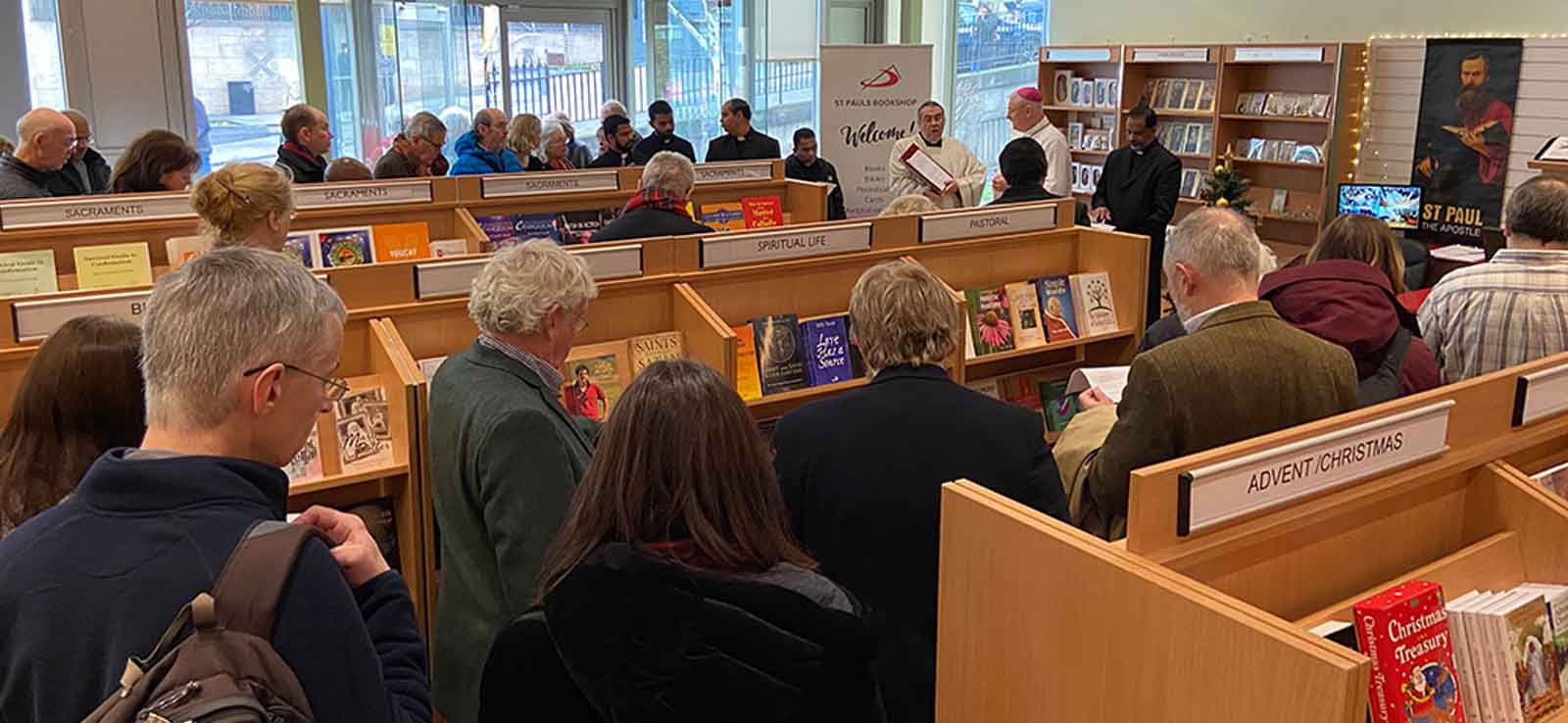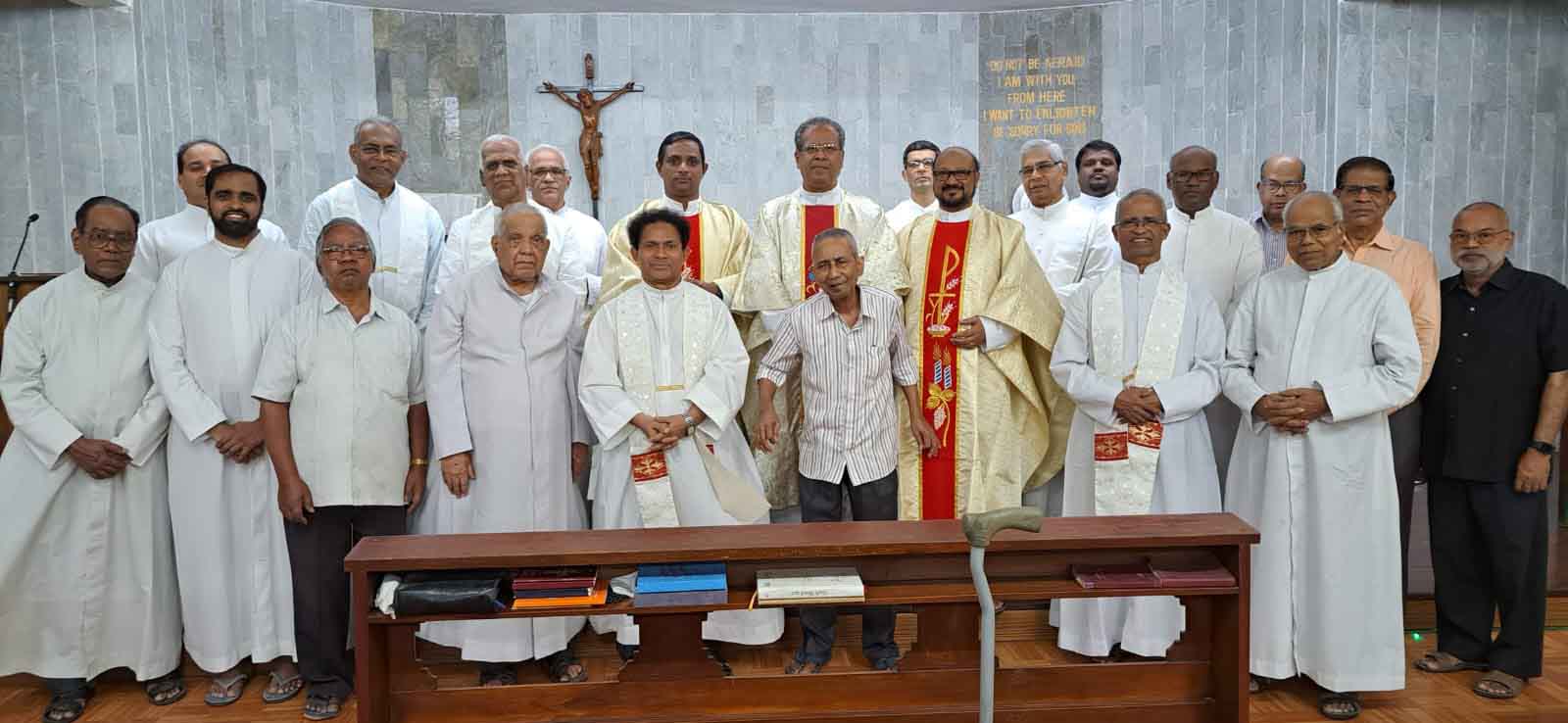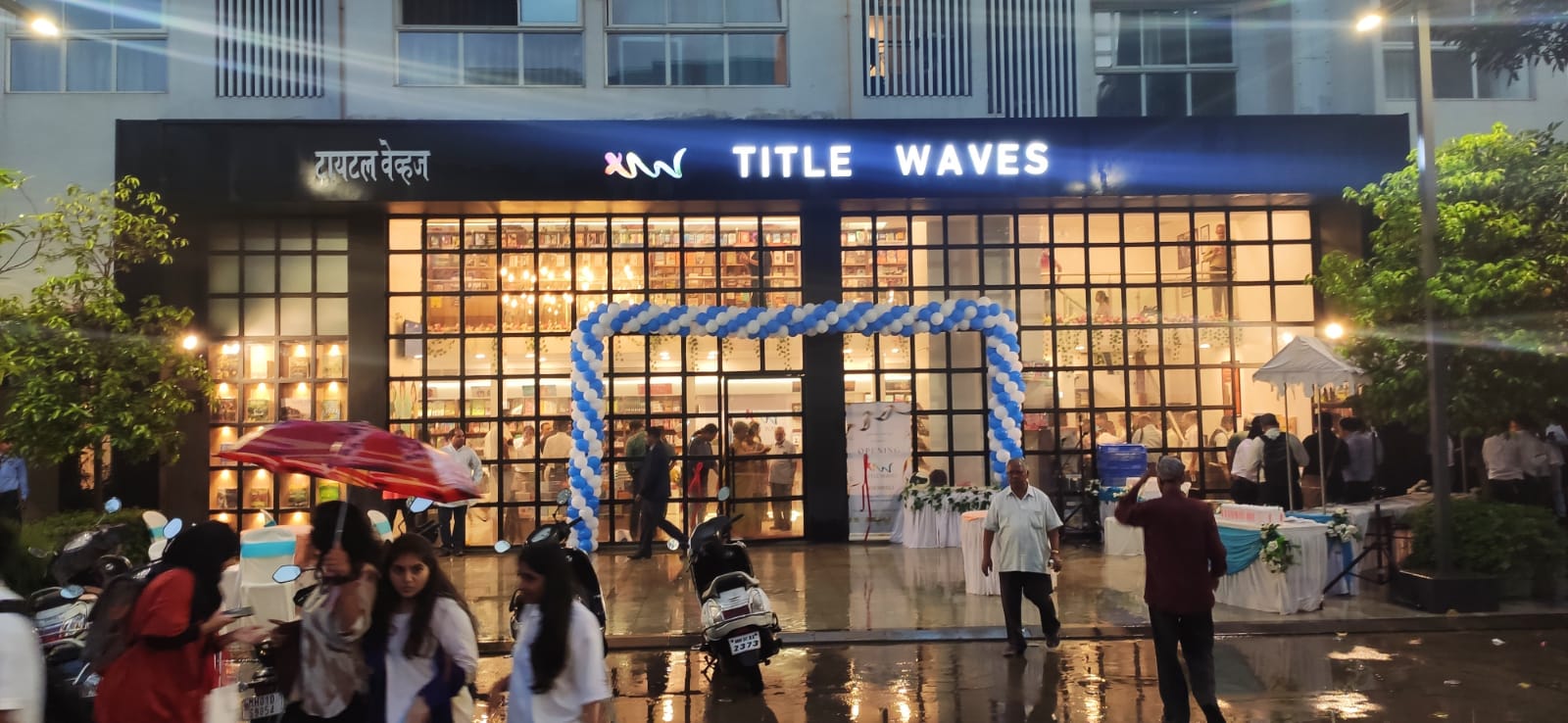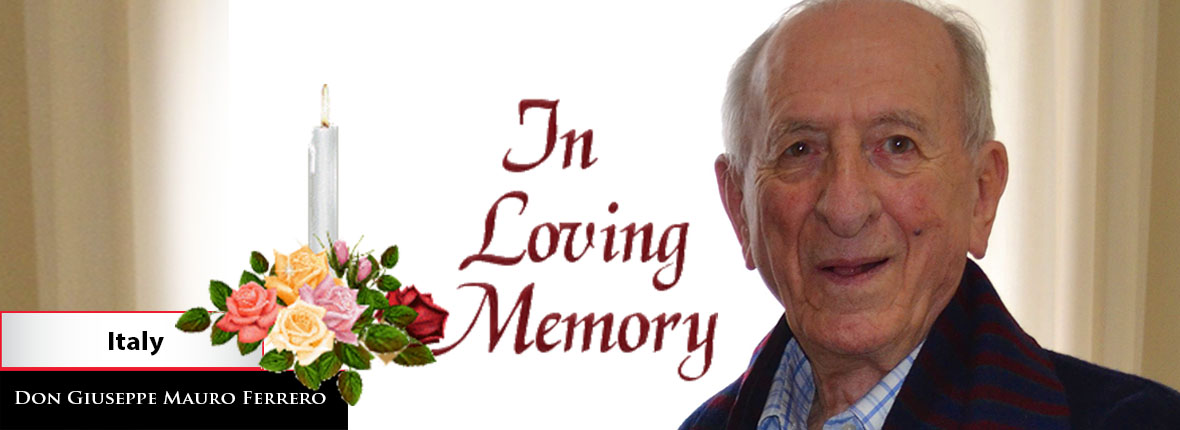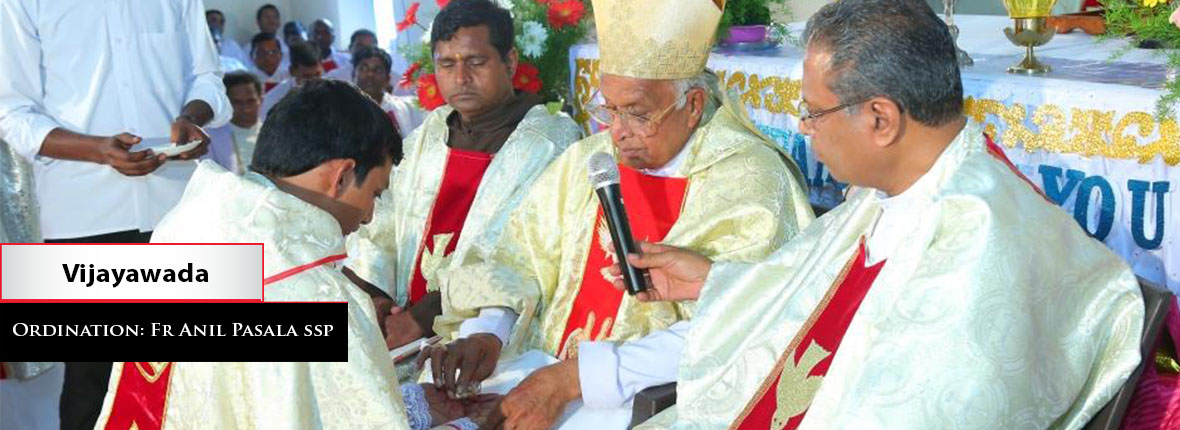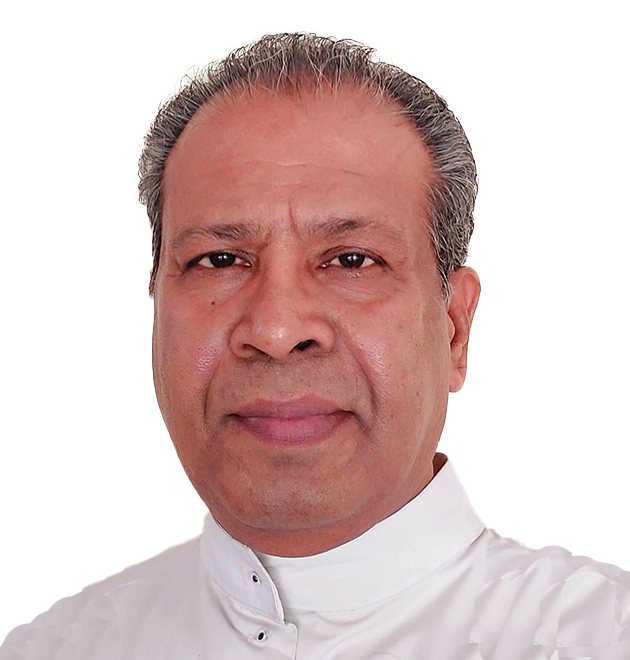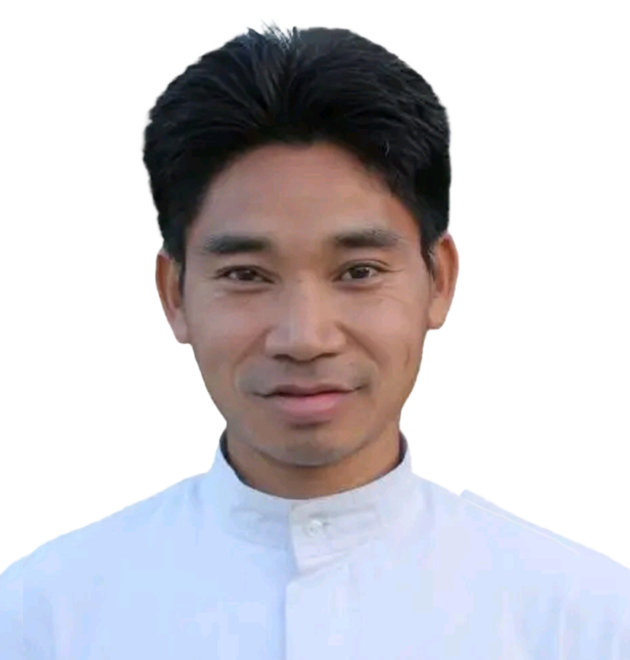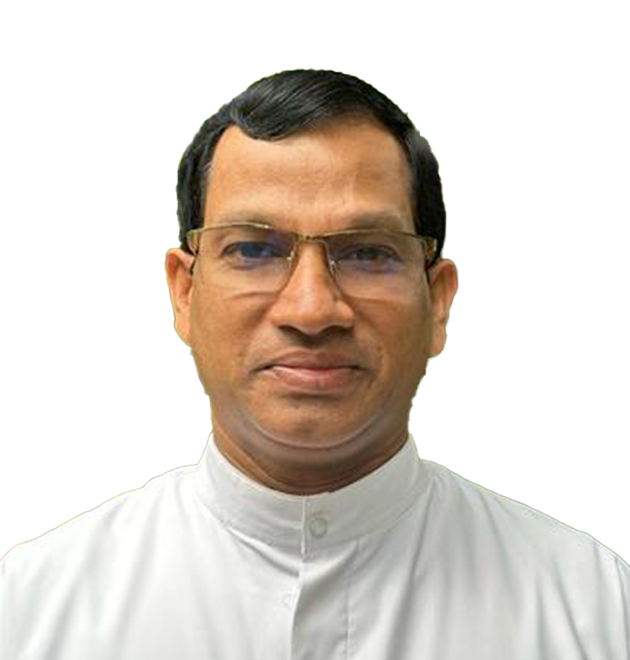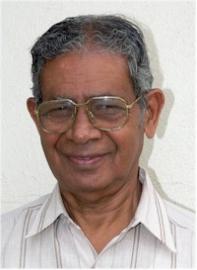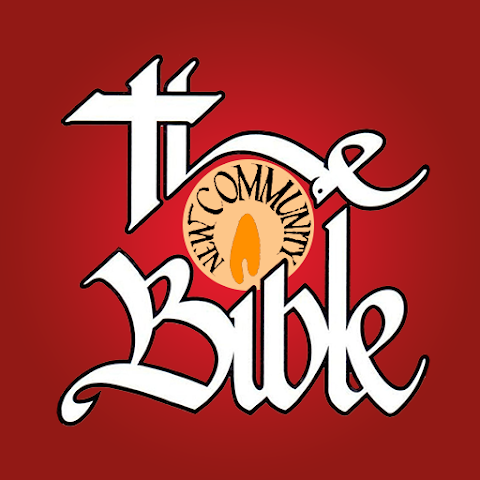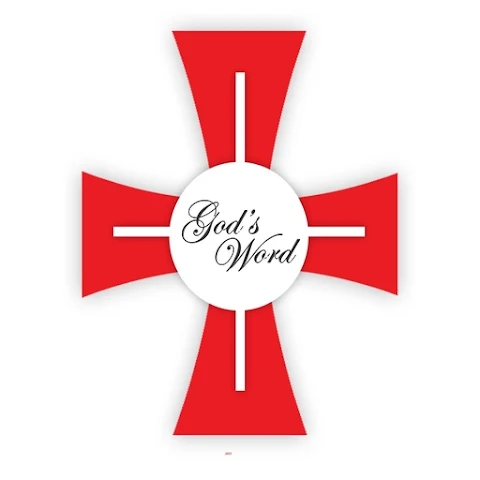House of Mumbai (formerly Bombay)
In December 1948 Bishop Valerian Gracias was appointed Archbishop of Bombay. In his very first speech he welcomed to Bombay all religious who were willing to work in the Archdiocese. Somebody informed Fr Alfonso Ferrero of this and he immediately got in touch with the new Archbishop who invited the Paulines to Bombay and entrusted to them the Examiner Press Bookshop. The bookshop had heavy debts and a large dead stock. Archbishop Gracias wanted the Paulines to buy the entire shop with all its assets and liabilities, and to pay Rs 50,000 at the time of transaction; the rest could be paid in instalments. This was indeed a very generous offer, and it was willingly accepted.
On 19 April 1950, Fr Ettore Diamantini arrived from Italy and joined the community. Two more confreres arrived on 11 November 1951: Fr Maurus to Bombay and Fr Antonio Rossi to Allahabad. Fr Alfonso Ferrero informed Archbishop Valerian that the Daughters of St Paul had expressed their desire to come to India. Having enquired more about their apostolate, the Archbishop asked him to invite them. The Sisters reached Bombay on 18 August 1951.
Meanwhile, with the help received from Propaganda Fide, the Society of St Paul paid the first instalment to Archbishop Valerian Gracias, and took over the Examiner Press Bookshop in Bombay on 15 July 1951. Only two Paulines were in Bombay then: Fr Alfonso Ferrero and Br Bernardino. They stayed in a room the Archbishop gave them, in a school behind the Cathedral. In February 1952 Fr Attilio Tempra came from Italy and was stationed in Bombay. Fr Maurus was already there from November 1951. The room offered by the Archbishop was too small for the four of them, and so they bought a suitable place in Bandra West and built a house in it.
On the first day of the takeover, four employees of the Examiner Bookshop went on a protest strike. They deliberately left the books, accounts and bills in a mess. With great difficulty Fr Alfonso Ferrero and Br Bernardino, the only Paulines in Bombay at the time, put things in order. Mr Benjamin Martis joined them as accountant and continued to serve in the bookshop for nearly forty years.
Fr Tempra was now the superior of the community in Bombay. Under his able and energetic leadership the Bombay community grew rapidly. In 1953 a house was built at Bandra, vocations were recruited; and Fr Diamantini, after a short stay at Allahabad, came to Bombay where he looked after the formation of the aspirants till he left India in 1972. A press was opened in the house in 1957.
The same year the house was extended. In December the same year Br Pio Rizzo also came from Allahabad to Bombay to be the manager of the Examiner Press Bookshop. He carried out this responsibility till he left for Ireland in 1981.
In 1961 Fr Alfonso Ferrero was transferred to Bombay as superior. He got the building extended to accommodate the printing press, classrooms and dormitory for our students, a spacious chapel and a refectory.
In 1963 Primo Maestro made his fourth and last visit to India. He reached Bombay on 22 February and stayed there three days, visiting our house and the new wing under construction by its side, the Daughters of St Paul nearby and the Pious Disciples close to the sea – all in Bandra. On 23 February, after Holy Mass, he preached a meditation to the SSP community, and later met all members of the house, from the youngest to the oldest. On 24 February Fr Alberione preached the meditation in the morning and Fr Diamantini translated it. After the meditation, Fr Alberione celebrated Mass for the community and Fr Diamantini served at the altar. Soon after the Consecration, Fr Diamantini who was suffering from a stomach ulcer vomited a large quantity of blood. Seeing him vomiting so much blood, Primo Maestro fainted. Those present rushed to help, and carried both the priests to their rooms. When Fr Alfonso Ferrero who had gone to celebrate Mass at the Daughters returned, he arranged to take Fr Diamantini to hospital. He requested Fr Alberione who had regained consciousness to take absolute rest till afternoon. After this he completed the Mass which Fr Alberione had to interrupt.
Fr Alberione had not yet fully recovered, Fr Diamantini was in hospital, and the construction of a new wing of the house was in course. Therefore Fr Alfonso Ferrero asked Primo Maestro’s permission to postpone their return journey by a few days. After a moment of reflection, he replied, “Let us proceed as planned.”
On 25 February 1963, Primo Maesro and Fr Alfonso Ferrero reached New Delhi on their way to Allahabad. They stayed two days with the Archishop, and he took it as an honour to offer hospitality to our Founder and to the Regional Superior of the SSP in India. On 26, the two guests went around visiting various places in New Delhi and Old Delhi, making use of the car and the driver put at their disposal by the Italian Ambassador in New Delhi.
In 1963 the first offset printing machine came from Nebiolo, Turin. It was the first of its kind in the whole of Bombay. Br VianneyMavara (died in 1985) worked in the photography and Fr Albert Rego (at present in Canada) made the plates, and Br James Uppani who was then in Bombay soon learned to operate the machine well and began printing in four colours. On 30 June 1965 India became a Province of the Society of St Paul, and Fr Alfonso Ferrero was appointed its first Provincial, with office and residence in Bombay. In his words, “The history of the Society of St Paul in India is a history of hardships and difficulties. However, it is also a history of innumerable blessings of God who, in spite of our many errors and evident limitations, has been very generous and merciful to us. To Him be our thanks, in all humility. In Him we trust for the future.”
In 1971 a new annexe to the house was built with kitchen and refectory on the ground floor, the provincial’s office and residence on the first floor and the community chapel on the second floor.
In 1975 Fr Aloysius Kokkatt, superior of the Bombay community, was asked to study the possibility of starting a monthly magazine for the family. It was entitled Home Life and a team was appointed for its realisation. Fr Aloysius was appointed editor and publisher. The first issue of Home Life was published in June 1975. It was appreciated by the elite, including Valerian Cardinal Gracias, Archbishop of Bombay, who wrote to the editor appreciating the format, content, lay out and presentation of the magazine. All the same, the circulation continued to be low and the magazine was running on heavy financial loss. We failed to collect adequate number of advertisements to sustain it. Therefore unfortunately after eleven years of publication, in 1986 it had to be closed down.
However, another important initiative was taken the same year. In 1986 we began publishing the Good News Bible, Catholic edition, by agreement with United Bible Societies in New York. Our first print was of 10,000 copies. Till today we have published 20, 00,000 copies in three formats: regular edition, pocket edition and family edition. We have also published 3,00,000 copies of the Good News New Testament. In collaboration with the Bible Society of India we published a beautiful edition, with multi-colour illustrations, of the Bible for Children. So far we have printed 40,000 copies of it. In June 1990 Fr George Kaitholil, then professor of Dogmatic Theology at St Joseph’s Regional Seminary in Allahabad as well as master of our juniors in the courses of philosophy and of theology in Allahabad, was called to Mumbai to take charge as the first General Editor of the Province. In 1991 for the first time we participated in the Frankfurt Book-fair as exhibitors. The same year we obtained the necessary permission from DLT, London, and published from Mumbai the New Jerusalem Bible, Standard Edition, for the first time in Asia. Since then we have published 18,000 copies of the standard edition and 20,000 copies of the pocket edition of this Bible.
The New Community Bible, a project undertaken by the province in 1990 in view of having a Bible of our own, with commentary enriched with Indian socio-economic and religio-cultural references, duly approved by the ecclesiastical authorities, was published on 29 June 2008, the day of beginning the Pauline Year in the universal Church. 15,000 copies of the first edition were exhausted in less than two weeks! In August 2011 we published 50,000 copies of a new edition of this Bible revised by ten Bible Scholars.
In 2011, in collaboration with Copenhagen Publishing House, Denmark, we published 7500 copies of My First Bible for very young children.
In the house of Mumbai is located St Paul Audiovisuals which produces and distributes CDs, DVDs and VCDs of devotional songs in English and in Hindi, instrumental music, meditation discourses and short films. So far it has produced 115 music CDs and 8 short films.
In the premises of the local house, a new building – St Pauls Media Complex – was completed in 2010. In it are located a general bookshop, St Pauls Book and Religious Art Centre, St Pauls Press Training School and St Pauls Institute of Communication Education (SPICE). Some parts of the building are rented out for various activities.
SPICE was opened on 20 August 2011, with Fr ShaijuVadakkemury as its first Director. It is an autonomous educational institute committed to imparting career oriented training of high quality to help people become effective in the field of Mass Media. It empowers and encourages the youth to employ the Mass Media for the good of humanity. Students are given opportunity to interact with a skilled team of professionals in the field of designing, writing, printing, publicity, audio-visuals and marketing. SPICE also produces educational and informative multimedia materials for educational institutions, social service groups, human resource training centres and T. V. Channels.
Another activity of the community of Mumbai is St Paul Press Training School, opened in July 1992 with Br Blaise Thadathil as the principal. After two years Br John Porunnolil was appointed principal. The school offers the poor and the less privileged boys and those from the lower income families a professional diploma course in printing technology and graphic art for one year. The students are given the opportunity to have practical training at St Pauls printing press and the multimedia workshop at SPICE. The entire course is given free of charge; in fact the students are given a moderate stipend. The Press Training School has already trained more than 150 students, most of whom are well employed now. The community of Bombay carries out numerous activities. The central editorial office (for English publications) and the technical department are located here. They take care of publishing about 130 new books and about 300 reprints every year. India being a Federal State divided into 23 states, with 20 different official languages and about a thousand dialects, we publish most of our editions in English which is known by the majority of educated people.
For a number of years the community held a grand-scale book-fair annually, sometimes in suitable places outside and sometimes in the community premises. Our own publications and books from other publishers were exhibited and sold at concessional rates.
From the community of Mumbai are published the following periodicals:
The Sunday Liturgy,The Teenager Today, Inspirational Quote,
In 2004 the community of Mumbai opened a book centre at Sanpada, New Mumbai, about 50 kilometres from the local house. One lay person looks after the daily running of the book centre. With the help of our Juniors, the centre also conducts book exhibitions in the schools and parishes of New Mumbai. Though the Catholic population in the area is small, the book centre is slowly becoming popular and the demand for religious articles is increasing.
|























